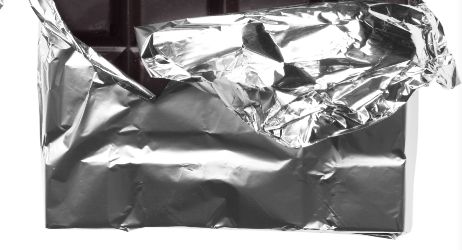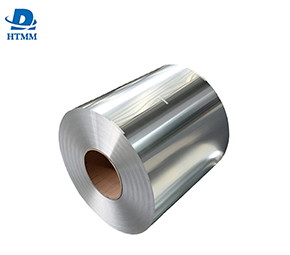Improving structural design is one of the key strategies for reducing vehicle weight. The architecture of vehicles is continually being improved by engineers and designers, who use cutting-edge technologies to keep or even improve safety while reducing superfluous weight. They can pinpoint regions where materials can be deliberately removed or replaced, leading to lighter but stronger vehicle structures, using computer simulations and sophisticated materials.
Due to its potential advantages in numerous areas, reducing vehicle weight has gained significant attention in the automobile industry. As was already said, reducing vehicle weight not only increases fuel economy and lowers exhaust emissions, but also satisfies the growing demand for low-pollution transportation solutions.
Improving structural design is one of the key strategies for vehicle weight reduction. In order to maintain or even improve safety while reducing superfluous weight, engineers and designers are continually attempting to optimize vehicle construction. They can locate regions where materials can be strategically removed or changed, resulting in lighter but stronger vehicle structures, using computer models and sophisticated materials.
The use of lightweight materials is another important component in lowering vehicle weight. Steel has typically been used to make most cars since it is quite hefty when compared to other materials. A number of lightweight substitutes have, however, been made possible by recent developments in materials science. These materials include magnesium, high-strength polymers, carbon fiber composites, and aluminum foil.
Because of its outstanding strength-to-weight ratio, aluminumfoil rolls is a preferred option in the automobile sector. It has been shown to be a successful method of weight reduction to switch from conventional copper alloy radiators to composite aluminum foil radiators. Aluminum radiators have comparable or even better performance than copper alloy radiators, notably in terms of heat dissipation and cooling efficiency, which helps to lower the overall weight of the vehicle.
The use of composite big roll aluminum foil in heat sinks has a number of additional benefits. Combining many elements, composite materials draw on each one's advantages to create products that are stronger than the sum of their parts. Aluminum's ability to transmit heat is enhanced in this situation when it is combined with other components, making it perfect for effective cooling systems.
Aluminum is also an affordable option for automakers due to its ample supply and low cost. The availability of materials like aluminum is compatible with the goal of lessening the total impact of automobiles on the environment as the automotive industry seeks out more environmentally friendly and sustainable methods.
In conclusion, lowering vehicle weight through better structural design and the use of lightweight materials like aluminum is an important step toward cleaner, more energy-efficient, and less polluting transportation. The automobile industry is probably going to have more opportunity to increase vehicle performance and sustainability while also satisfying shifting consumer demands as technology develops and new materials are created.
The use of lightweight materials is another important component in lowering vehicle weight. Steel has typically been used to make most cars since it is quite hefty when compared to other materials. A number of lightweight substitutes have, however, been made possible by recent developments in materials science. These materials include magnesium, high-strength polymers, carbon fiber composites, and aluminum.
 Because of its outstanding strength-to-weight ratio, aluminum is a preferred option in the automobile sector. It has been shown to be a successful method of weight reduction to switch from conventional copper alloy radiators to composite aluminum foil radiators. Aluminum radiators have comparable or even better performance than copper alloy radiators, notably in terms of heat dissipation and cooling efficiency, which helps to lower the overall weight of the vehicle.
Because of its outstanding strength-to-weight ratio, aluminum is a preferred option in the automobile sector. It has been shown to be a successful method of weight reduction to switch from conventional copper alloy radiators to composite aluminum foil radiators. Aluminum radiators have comparable or even better performance than copper alloy radiators, notably in terms of heat dissipation and cooling efficiency, which helps to lower the overall weight of the vehicle.The use of composite aluminum foil in heat sinks has a number of additional benefits. Combining many elements, composite materials draw on each one's advantages to create products that are stronger than the sum of their parts. In this situation, adding other components to aluminum enhances its capacity for heat transfer, making it perfect for effective cooling systems.
A heat sink's preferred material is laminated aluminum foil because of its many benefits. Optimal operating temperatures are maintained and heat is dissipated with the aid of heat sinks, which are crucial parts of electrical devices and systems. Utilizing composite materials, such aluminum foil that has been laminated, has a number of significant benefits, mainly through combining the strengths of various elements.
Thermal conductivity: Aluminum effectively conducts heat from a heat source to its surroundings. This property makes it a good heat conductor. The ability to swiftly dissipate heat and stop electronic components from overheating is a benefit of laminated aluminum foil heat sinks. The electronic device now operates more dependably and efficiently.
Aluminum foil has a high degree of malleability and is simple to mold into a variety of forms and configurations to meet the needs and specifications of various heat sink designs. In order to optimize surface area for greater heat dissipation, engineers might design intricate and effective heat sink designs.
Reduced Vibration and Noise: When used in radiators, composite materials offer special characteristics that lower vibration and noise. Particularly advantageous are applications like electronics in consumer electronics or industrial machinery where vibration and noise levels must be kept to a minimum.
Customizability: By combining several materials with various qualities during the lamination process, engineers can create composites that are specifically suited to a given set of performance criteria. The design of heat sinks can be tailored to meet the needs of certain electrical applications because to this customizability.
Sustainability: Laminated aluminum foil radiators are more eco-friendly than other non-recyclable radiator materials since aluminum is a substance that can be recycled. Utilizing recycled materials is essential for lowering the environmental effect of electronic equipment as sustainability becomes a more important topic.
Aluminum is a cost-effective option for manufacturers due to its low cost and plentiful resources. The availability of materials like aluminum is compatible with the objective of lessening the total impact of automobiles on the environment, as the automotive industry continues to explore more sustainable and environmentally friendly methods.
In conclusion, a crucial step toward cleaner, more energy-efficient, and less polluting transportation is the reduction of vehicle weight through superior structural design and the use of lightweight materials like aluminum. The automobile industry is anticipated to see greater chances to enhance vehicle performance and sustainability while addressing shifting consumer needs as technology develops and new materials are created.






